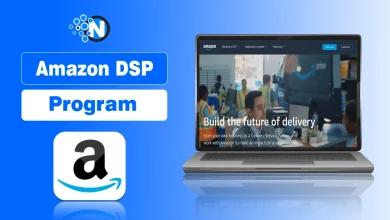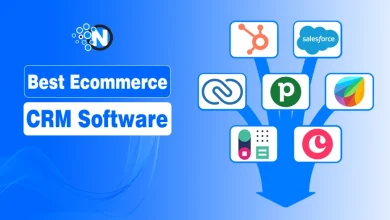10 Tips for Taking Your E-Commerce Business Global

E-commerce has revolutionized the retail landscape, enabling brands to reach shoppers nationwide – and globally.
Offering consumers a fast and convenient way to purchase almost anything, anywhere, has been the founding principle of e-commerce, and boy, is it a good one!
Back in the 1980s, the idea of being able to sit in bed at night, ordering anything from car tires to vitamin supplements, would have been laughable. Now, it’s comfortably part of our bedtime routine.
Taking your e commerce business global is the obvious next step, and no business is too small to ship worldwide; that is an untapped growth strategy.
In this blog post, I have listed the top 10 tips for taking your e-commerce business global to attract overseas customers.
So let’s start!
Why a Global E-Commerce Business Matters?
E-commerce business all over the world matters a lot because they open up a whole new market for enterprises. Globalizing an E-commerce business increases revenue growth at a new level and increases brand recognition. Whereas it diversifies the risk factors as well.
Expanding an e-commerce business helps you to reach out to a vast audience, which will automatically overcome the geographic limitations. Global markets operate 24/7, which offers convenience and accessibility to customers worldwide without any time frame boundary.

10 Tips to Take Your E-Commerce Business Global
Expanding your e-commerce business at a global level can be tricky. Here are some proven tips that will help you take your business to a global level:
1. Research Your Target Markets
Before expanding your business, you have to deeply understand your target audience. For that purpose, you have to research local preferences, buying habits of the customers, and cultural values. You have to focus on multiple color schemes because each color represents a different meaning in each country.
For example, Red means luck in China but danger in some Western countries. Use tools like Google Trends to identify demand. Analyze competitors in each region. This ensures your products resonate locally.
2. Optimize Your Website for International SEO
You have to optimize your website according to the global audience, and for that, focus on several aspects mentioned below.
- You should have a search-friendly website.
- Optimize the HTML attributes that specify the language and, optionally, the geographic region of a webpage.
- Translate content accurately.
- Try to avoid the automated translations; they often miss context.
- Include local keywords, such as“sneakers” in the U.S. can be “trainers” in the UK.
- Make sure of fast loading times.
- According to the algorithms, such as Mobile-first indexing, Google prioritizes responsive designs, which you can’t ignore.
3. International Regulations and Compliance
Understand the international regulations and laws. Every country has unique laws. For that, you have to focus on a few factors that are mentioned below.
- Research import duties, taxes, and data protection rules.
- The EU’s GDPR strict data privacy measures.
- Disobedience of policies can lead to fines.
- Consult legal experts to avoid costly mistakes.
- Pay attention to the product regulation, i.e., some products, such as cosmetics, are subject to strict rules in certain places.
4. Warehousing
Next up on this list is ecommerce warehouse services.
When shipping globally, there is a lot more to order fulfillment than just getting packages from point A to point B.
While you do not need to hire a new team, you should enlist the services of a reputable company with impressive knowledge and experience on the subject.
Simply cross-border sales and scale your business with the right 3PL provider for the job. Ensure the 3PL you choose has a robust network of warehouses in your target countries.
5. Choose the Right Shipping and Logistics Partners
In the Global e-commerce business, shipping is one of the main hurdles. For its operation, you have to partner with reliable logistics providers. You also have to focus on comparing costs and delivery times.
For example, DHL and FedEx offer global reach but vary in pricing. Offer transparent shipping costs. Customers don’t like sudden price differences. You should consider local fulfillment centers to reduce delivery times and track shipments to build trust.
6. Localized Customer Support
Customer service is the main thing that sets you apart from your competitors. Focus on providing support in local languages. Utilize AI chatbots for 24/7 assistance. However, human support adds a personal touch.
Set up local phone numbers or email addresses. For instance, WhatsApp is popular in Latin America for customer queries. Respond quickly because it enhances customer satisfaction and loyalty towards you.
7. Marketing Strategies
Your marketing should resonate locally. For that purpose, you have to optimize your social media campaigns according to the target audience that is focused on the regional platforms. For example, WeChat is popular in China, and Instagram is popular in the U.S.
Use the local influencers to establish trust. Drive region-specific promotions. As an example, provide discounts in the U.S. during Christmas. Monitor the performance of the campaigns to enhance the strategies. A data-driven marketing increases conversions.
8. Using Cross-Border Payment Solutions
You have to focus on the payment preferences that are utilized globally. Every region and territory has a specified mostly used payment method. Offer multiple options like PayPal, Stripe, and other local methods.
For example, you have to make sure secure transactions, such as AliPay, which is a payment platform widely used in China.
Display prices in local currencies to avoid confusion. Transparent pricing builds trust. Also, account for currency conversion fees. This improves the checkout experience.
9. Build a Scalable Technology Infrastructure
You need to utilize reliable technology to facilitate the expansion of the world. Take advantage of scalable platforms such as Shopify or WooCommerce. Ensure that it supports multiple languages and currencies. Cross-link to international payment gateways and APIs of logistics.
Optimize for speed and security. You can use a CDN to reduce load times globally. A strong infrastructure prevents downtime during traffic spikes.
10. Monitor and Adapt to Global Trends
The global markets are changing rapidly, and in that regard, one must keep up with trends. Measure performance using such tools as Google Analytics. Track customer satisfaction on platforms such as X and adjust strategies based on the data.
Take the instance that your product only caters to a region that favors environmentally-friendly products. So you can emphasize your sustainable business activities. Being flexible enables you to stay present in flexible markets.
Summing Up
Expanding your e-commerce business globally is a strategic move that can significantly boost revenue and brand recognition. By conducting thorough market research, optimizing your website for international audiences, and offering localized support, you can effectively connect with customers.
Focus on local laws and select authentic shipping partners that can ensure customer satisfaction. Globalization can help you prosper in your business, provided you have the necessary drive. You should always focus on strategies to expand your business globally to new customers and markets.




